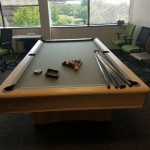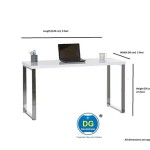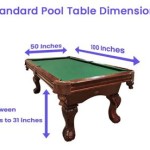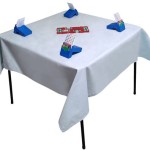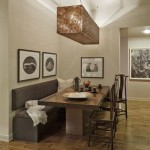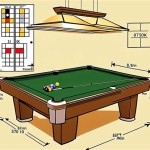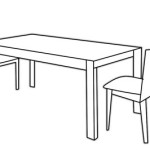The Enduring Appeal of Nesting Side Tables: A Pottery Barn Perspective
Nesting side tables, characterized by their space-saving design and adaptability, have become a furniture staple in contemporary homes. Pottery Barn, a retailer known for its classic and comfortable aesthetic, offers a diverse range of nesting side tables that cater to various design sensibilities. Understanding the features, benefits, and considerations when selecting nesting side tables from Pottery Barn is crucial for homeowners seeking to enhance their living spaces.
The core concept behind nesting tables lies in their ability to be stored one inside the other. This design maximizes floor space, particularly in smaller apartments or rooms where surface area is limited. When needed, the tables can be easily pulled out and arranged to provide additional surfaces for drinks, snacks, books, or decor. This inherent versatility makes them a practical and stylish addition to living rooms, bedrooms, and even home offices.
Pottery Barn's selection of nesting side tables reflects a commitment to quality materials and timeless design. From solid wood to metal and glass combinations, the brand offers options that blend seamlessly with a variety of interior styles. This article will delve into the key aspects of Pottery Barn's nesting side table offerings, providing insights into their construction, design features, and suitability for different living environments.
Material and Construction: Durability and Aesthetic Considerations
The material composition of nesting side tables directly influences their durability, aesthetic appeal, and overall longevity. Pottery Barn utilizes a range of materials, each with its own distinct characteristics. Solid wood, such as mango wood, acacia wood, and reclaimed pine, is a popular choice for its natural beauty and robust construction. These woods offer a warm, inviting feel and can be stained or finished in a variety of colors to complement different decor schemes.
Metal frames, often crafted from iron or steel, provide a sleek and modern aesthetic. These frames are typically powder-coated to resist rust and scratches, ensuring long-lasting durability. Metal nesting tables often feature glass or wooden tops, creating a visually interesting contrast in textures. The combination of metal and glass provides a light and airy feel, making them suitable for smaller spaces.
The construction techniques employed in the creation of Pottery Barn nesting side tables are equally important. Dovetail joints, mortise-and-tenon joints, and reinforced corners are common features that enhance the structural integrity of the tables. These details demonstrate a commitment to quality craftsmanship and ensure that the tables can withstand regular use. Customers should examine the construction details to assess the overall quality and durability of the nesting tables.
Furthermore, the finish applied to the nesting tables plays a significant role in their appearance and protection. Pottery Barn offers a variety of finishes, including hand-applied stains, painted finishes, and protective sealants. These finishes not only enhance the natural beauty of the materials but also protect them from scratches, stains, and moisture damage. Choosing a finish that is appropriate for the intended use and environment is essential for maintaining the appearance and longevity of the tables.
The weight capacity of the nesting side tables should also be considered. While nesting tables are designed to be lightweight and easily movable, they should be able to support the weight of typical items such as drinks, books, and decorative objects. Checking the weight capacity specifications before purchasing is crucial to ensure that the tables can meet the demands of everyday use.
Design and Style: Blending Functionality with Aesthetics
Pottery Barn's nesting side tables are available in a wide range of designs and styles, catering to diverse interior design preferences. From traditional to contemporary, rustic to minimalist, there is a nesting table set to complement virtually any decor scheme. The design elements, such as the shape of the tables, the leg style, and the finish, all contribute to the overall aesthetic.
Traditional nesting tables often feature intricate detailing, such as carved legs, decorative moldings, and antique-inspired finishes. These tables evoke a sense of timeless elegance and are well-suited for formal living rooms or bedrooms. The use of rich wood tones and classic silhouettes adds to their traditional appeal. Examples might include tables with cabriole legs or those finished in a dark walnut stain.
Contemporary nesting tables, on the other hand, typically feature clean lines, minimalist designs, and modern materials. These tables often incorporate metal frames, glass tops, and sleek finishes. Their understated elegance makes them a versatile addition to modern apartments, lofts, and minimalist interiors. Geometric shapes and contrasting materials are common features of contemporary nesting table designs.
Rustic nesting tables embrace a more natural and organic aesthetic. These tables often feature reclaimed wood, distressed finishes, and exposed hardware. Their rugged charm adds character and warmth to casual living spaces. The use of natural textures and earthy tones creates a relaxed and inviting atmosphere. Examples might include tables made from reclaimed pine with a weathered finish or those with wrought iron accents.
The size and shape of the nesting tables are also important design considerations. Pottery Barn offers nesting tables in various sizes and shapes, including round, square, and rectangular. The size of the tables should be proportionate to the surrounding furniture and the overall size of the room. The shape of the tables can also influence the flow of the space and the visual balance of the room. Smaller, round tables are often ideal for tight spaces, while larger, rectangular tables can provide more surface area for display or entertaining.
The color palette of the nesting tables should also be carefully considered. Pottery Barn offers nesting tables in a variety of colors, from neutral tones to bold hues. Choosing a color that complements the existing color scheme of the room is essential for creating a cohesive and harmonious look. Neutral colors, such as white, gray, and beige, are versatile and can easily blend with a variety of decor styles. Bold colors can add a pop of personality and visual interest to the room.
Functionality and Practicality: Maximizing Space and Versatility
The primary advantage of nesting side tables lies in their space-saving design and adaptability. These tables can be easily stored when not in use, freeing up valuable floor space. When needed, they can be quickly pulled out and arranged to provide additional surfaces for various purposes. This inherent versatility makes them a practical and stylish addition to any home.
Nesting tables are particularly useful in small apartments or homes where space is at a premium. They can be used as side tables in the living room, nightstands in the bedroom, or even as temporary workstations in a home office. Their compact size allows them to be easily moved and repositioned as needed.
The different sizes of the nesting tables also add to their functionality. The larger tables can be used to display decorative items, such as vases or picture frames, while the smaller tables can be used to hold drinks or snacks. This multi-tiered design allows for a variety of uses and adds visual interest to the room.
The ease of storage is another key benefit of nesting tables. When not in use, the tables can be easily stored one inside the other, minimizing their footprint and freeing up valuable floor space. This is particularly useful in areas where space is limited or where the tables are only needed occasionally.
The mobility of nesting tables also makes them a practical choice for entertaining. They can be easily moved from room to room to provide additional surfaces for guests to place their drinks or appetizers. This flexibility makes them ideal for parties, gatherings, or casual get-togethers.
Furthermore, nesting tables can be used to create a layered and dynamic look in a room. By arranging the tables at different heights and angles, you can add visual interest and depth to the space. This is particularly effective when using nesting tables to display decorative items or to create a focal point in the room.
Considering the weight capacity is also crucial for practical use. While nesting tables are designed to be lightweight and easily movable, they should be able to support the weight of typical items such as drinks, books, and decorative objects. Checking the weight capacity specifications before purchasing is essential to ensure that the tables can meet the demands of everyday use.
Finally, the ease of cleaning and maintenance should also be considered. Nesting tables with durable finishes are easier to clean and maintain, ensuring that they will look their best for years to come. Wiping down the tables with a damp cloth and using a furniture polish occasionally is typically all that is needed to keep them in good condition.

Tanner Rectangular Nesting End Table Pottery Barn

Tanner Rectangular Nesting End Table Pottery Barn

Nesting Table End Side Tables Pottery Barn

Tanner Nesting Side Tables Broe Finish Pottery Barn

Woven Nesting Side Tables Pottery Barn

Nesting Tables Pottery Barn

Pb Look Alikes Pottery Barn Willow Nesting Tables Living Room Furniture Unique

Newton Nesting Tables Pottery Barn

22 00 End Side Tables Pottery Barn

Delaney Round Calacatta Marble Nesting Coffee Tables Pottery Barn
Related Posts

